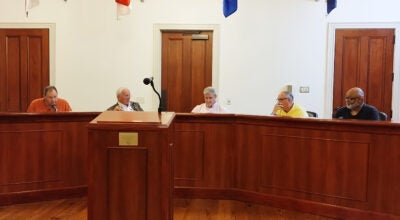Marengo County unemployment jumps to 8.6 percent
Published 11:50 pm Monday, January 26, 2009
Marengo County’s unemployment rate shot up to 8.6 percent, the highest it has been in many years. The rate jumped from 6.9 percent in November to 8.6 percent in December. Last year, it was 5.8 percent.
Businesses and industries in Marengo County have followed the same pace as other west Alabama companies in laying off employees during the economic downturn. The largest county employer to make cuts was Linden Lumber, which slashed 125 jobs.
There were 129 more people who filed for unemployment from November to December. There were 213 more compared to last year’s unemployment figures.
Alabama’s unemployment rate also jumped, rising to 6.7 percent in December, the highest rate in more than 15 years, and economists say it’s likely to continue.
State industrial relations director Tom Surtees announced Friday the rate had gone up from the state’s revised figure of 6.0 percent in November. The December rate was the highest since Alabama recorded 6.9 percent in July 1993.
The higher unemployment rate came out on the same day ThyssenKrupp announced it will delay the planned start of stainless steel production at a $4-billion plant north of Mobile, and Birmingham-based Compass Bank said it will cut 1,200 jobs, or about 10 percent of its staff, across Alabama and five other states.
Wilcox County leads Alabama in unemployment for December with 15.1 percent. Following Wilcox County are Chambers County at 14.0 percent and Winston County with 13.1 percent.
The lowest unemployment figures are in Shelby County with 4.4 percent, Madison County at 4.5 percent, and Coffee County at 5.2 percent.
Among the state’s largest counties, Madison measures 4.5 percent, Jefferson 5.9 percent and Montgomery and Mobile 6.5 percent.
Sam Addy, director of the Center for Business and Economic Research at the University of Alabama, said unemployment traditionally declines in December due to seasonal hiring by retail businesses, but that was not the case last month due to the recession.
Addy predicted that Alabama’s unemployment picture will keep getting worse until it peaks at 8.0 percent to 8.4 percent in the last half of 2009. But he said he doesn’t expect Alabama’s rate to get as bad as the national rate.
Joe Sumners, director of the Economic and Community Development Institute at Auburn University, agreed. He predicted Alabama’s unemployment will remain about a percentage point below the national rate.
Surtees reported Alabama lost 14,400 jobs during December.
From December 2007 to December 2008, employment fell from 2,025,100 to 1,983,200 – a loss of 41,900 jobs. Manufacturing industries suffered the biggest loss, with more than 17,000 jobs going away. The trade, transportation and utilities sector dropped by 8,600 jobs and hospitality industries lost 5,000 jobs.
The hospitality losses were reflected in the state’s lodging tax from hotels and motels, which declined nearly 3 percent over the last 12 months, according to the state Department of Revenue.
No matter how bad things look, Sumners said Alabama is a long way from the 1982 economic downturn, when unemployment hit a record 14.4 percent.
“There were times when we would have been dancing in the streets to have 6.7 percent,” he said.





